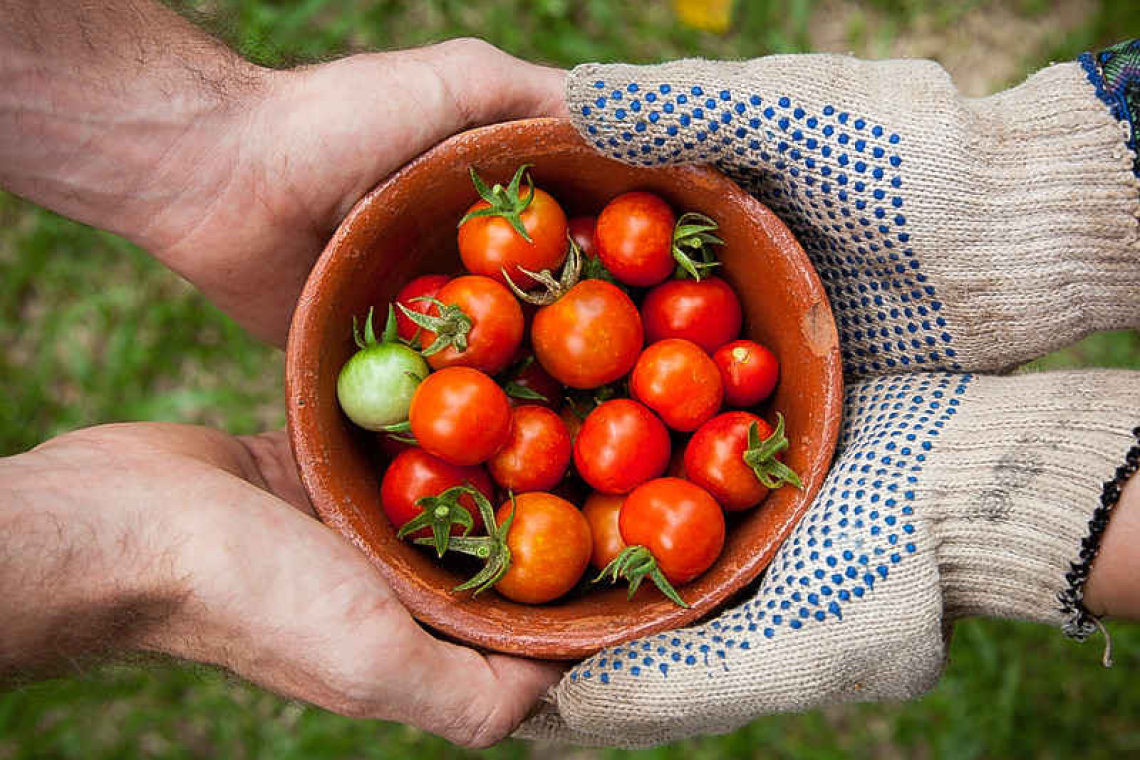By Dr. Colin Michie FRCPCH University of Central Lancashire.
Tomatoes are an accepted part of cheery vegetable displays in markets throughout the year. Their varied shapes, sizes and colours hide a host of pharmacological secrets.
Tomatoes were probably first brought into the kitchens of pre-Colombian Mexico and later those of the Aztecs. Their spread into the varied cuisines of the world was erratic because early specimens were sometimes mislabelled as “poison apples”, “wolfpeaches”, or used as table ornaments.
Notable milestones on their road to global fame were the creation of a tomato sauce condiment “Love apples” in 1812, a predecessor of Heinz Tomato Ketchup formally launched in 1876, and declared a national American condiment in 1896. A year later, Campbell’s introduced their condensed tomato soup. It was about then that the tomato was erroneously classified as a vegetable, for reasons of taxation, in the US Supreme Court.
Tomatoes are famed for their flexibility, umami flavours, acidity and their ability to mix in with other ingredients as emulsifiers. They can be the base for salads, stews, sauces and fries. They are rich in umami flavours, fibre, nutrients including vitamins C, E and folic acid, antioxidants and flavonoids. They are included in diets that are found to be health-promoting.
Wild, commercial, and over 3,000 heirloom species are all grown, but they can be afflicted by many pests, ranging from aphids to mites, fruit-worms to cutworms, viruses to fungi. Tomato plants and others in the nightshade family evolved a range of protective molecules to defend them against these. The tomato fruit contains metabolic factories, fruit chloroplasts, that create a fruity alchemy of medicinal, some potentially irritant molecules.
Tomato plants are Nightshades, part of the Solanaceae family. This includes some agricultural crops: the fruits, eggplants and peppers, the vegetable potato and leaves of tobacco. These plants all contain tiny amounts of the alkaloid solanine. Levels of solanine are much lower in tomatoes than in potatoes, and lower in ripe tomatoes when compared with green ones, so levels are not of concern in commercially available fruit or tomato products. Solanine can cause gastrointestinal upset and neurological symptoms.
Other nightshades are plants one hopes are of no interest to chefs, but are beloved of poisoners and anaesthetists. For instance, Datura, “Devil’s trumpets” or “Hells bells,” grows in gardens in St. Maarten. The flowers and seeds of these plants can cause cardiac arrhythmias and respiratory arrest. Some Datura species contain psychoactive substances too and have long associations with ritual and sorcery.
Nightshades used in traditional medicine are sources of atropine and scopolamine. All members of the nightshade family, including tomatoes, can inflame the bowel of sensitive individuals, causing stomach upsets. Some folk are allergic to just tomatoes, too, and suffer histamine release, with a rash and gastrointestinal upset.
Health benefits are linked to many molecules found in tomatoes. One of these is lycopene, a carotenoid found in our bodies too. Lycopene levels are high in tomato pastes; it is made too by water-melons, carrots, dragon-fruit, papayas, guava, gac and goji berries. It is a dark-red food dye – this pigment can stain plastic when used to mix/store your magic, legendary salsas or chokas. (Discolouration can be removed by soaking with a little bleach). Lycopene is a particularly powerful antioxidant – so could eating more tomatoes help promote health? What about a supplement of some type or intravenous supply to develop “super-tomato supports”?
An area of the body where carotenoids can be seen is the back of the eye. Near the centre of the retina is an area that is a little yellowish, the macula. This colour is present because of high levels of carotenoids in the neurosensory layers of the retina where their role as antioxidants is crucial. Macular degeneration is a common cause of visual loss in those over 50 years. Recent reviews suggest antioxidant supplements, such as those in tomatoes, benefit some sufferers of this condition. Early support has been found for carotenoids to help prevent cataracts too.
Lycopene has been proposed as a therapy to improve outcomes from malaria, to improve bone strength, prostate health, to reduce cancer rates or slow ageing. The data for these is weak: Nutritional supplements are not particularly effective for most of us. Logically it would seem to be an advantage to have more rather than less antioxidant activity in one’s daily diet. However, the impact of increasing your tomato intake in all of us to improve levels of this nutraceutical remains uncertain. Tomatoes contain other molecules such as tomatine and tomatidine whose activity against viruses including dengue, chikungunya and hepatitis is currently under investigation. A flavonoid from tomato skin, kampferol, is being tested as anti-inflammatory.
Scientific investigations into tomatoes are expanding. Their culinary wonders and variety of flavours are to be treasured. These fruit are quite easy to grow – try them as a healthy treat!
Dr. Colin Michie is currently the Associate Dean for Research and Knowledge Exchange at the School of Medicine in the University of Central Lancashire. He specializes in paediatrics, nutrition, and immunology. Michie has worked in the UK, southern Africa and Gaza as a paediatrician and educator and was the associate Academic Dean for the American University of the Caribbean Medical School in Sint Maarten a few years ago.







